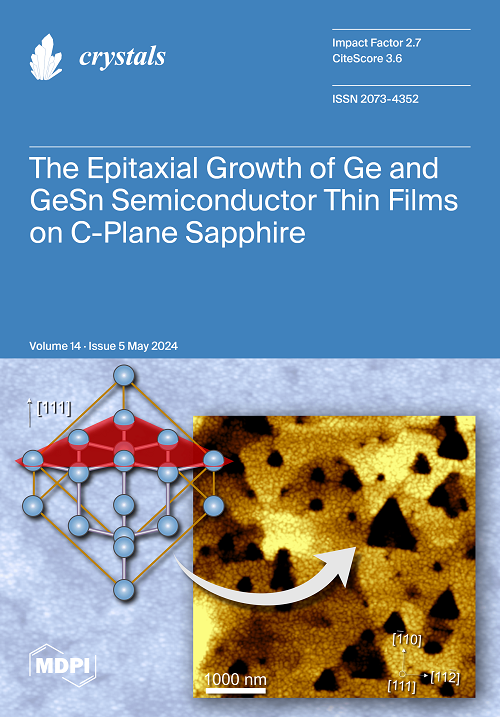Hydrometallurgical Technology for Producing Rhenium(VII) and Cobalt(II) from Waste
IF 2.4
4区 材料科学
Q2 CRYSTALLOGRAPHY
引用次数: 0
Abstract
This paper presents a method for obtaining cobalt(II) perrhenate from waste derived from two types of materials, i.e., Li-ion battery scrap, or more precisely, battery mass, and superalloy scrap. Both of the above-mentioned materials are a source of Co. However, a source of rhenium is perrhenic acid produced from ammonium perrhenate (recycled) by the ion exchange method using resins. Co(OH)2 can be precipitated from solutions resulting from the leaching of Li-ion battery mass, sludge from the Zn-Pb industry and superalloy scrap. The compound, after proper purification, can be used in a reaction with perrhenic acid to form Co(ReO4)2. The reaction should be conducted under the following conditions: time 1 h, room temperature, 30% excess of cobalt(II) hydroxide, and rhenium concentration in HReO4 from about 20 g/dm3 to 300 g/dm3. This work shows that with the use of Co(OH)2, obtained from waste, an anhydrous form of cobalt(II) perrhenate can be obtained, containing < 1000 ppm of the cumulative metal impurities.从废物中生产铼(VII)和钴(II)的湿法冶金技术
本文介绍了一种从两种材料(即锂离子电池废料,或更准确地说,电池块和超级合金废料)产生的废料中获取过铼酸钴(II)的方法。上述两种材料都是钴的来源。然而,铼的来源是利用树脂通过离子交换方法从高铼酸铵(回收)中生产的高铼酸。Co(OH)2 可从锂离子电池块浸出液、锌铅工业污泥和超级合金废料中析出。这种化合物经适当提纯后,可用于与过铼酸反应生成 Co(ReO4)2。反应应在以下条件下进行:时间 1 小时,室温,氢氧化钴(II)过量 30%,HReO4 中的铼浓度约为 20 g/dm3 至 300 g/dm3。这项工作表明,使用从废料中获得的 Co(OH)2 可以得到无水形式的过铼酸钴(II),其中累积的金属杂质含量小于 1000 ppm。
本文章由计算机程序翻译,如有差异,请以英文原文为准。
求助全文
约1分钟内获得全文
求助全文
来源期刊

Crystals
CRYSTALLOGRAPHYMATERIALS SCIENCE, MULTIDIS-MATERIALS SCIENCE, MULTIDISCIPLINARY
CiteScore
4.20
自引率
11.10%
发文量
1527
审稿时长
16.12 days
期刊介绍:
Crystals (ISSN 2073-4352) is an open access journal that covers all aspects of crystalline material research. Crystals can act as a reference, and as a publication resource, to the community. It publishes reviews, regular research articles, and short communications. Our aim is to encourage scientists to publish their experimental and theoretical results in as much detail as possible. Therefore, there is no restriction on article length. Full experimental details must be provided to enable the results to be reproduced. Crystals provides a forum for the advancement of our understanding of the nucleation, growth, processing, and characterization of crystalline materials. Their mechanical, chemical, electronic, magnetic, and optical properties, and their diverse applications, are all considered to be of importance.
 求助内容:
求助内容: 应助结果提醒方式:
应助结果提醒方式:


